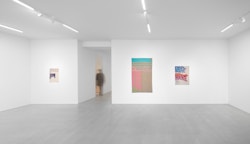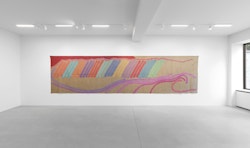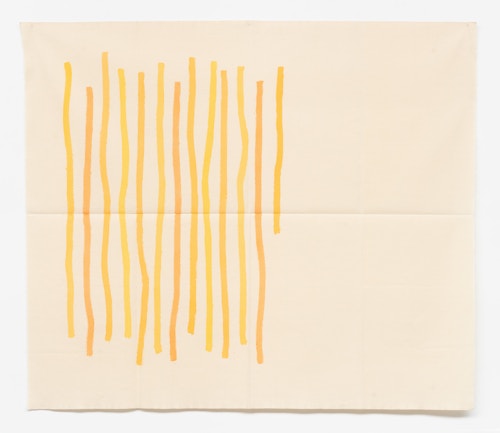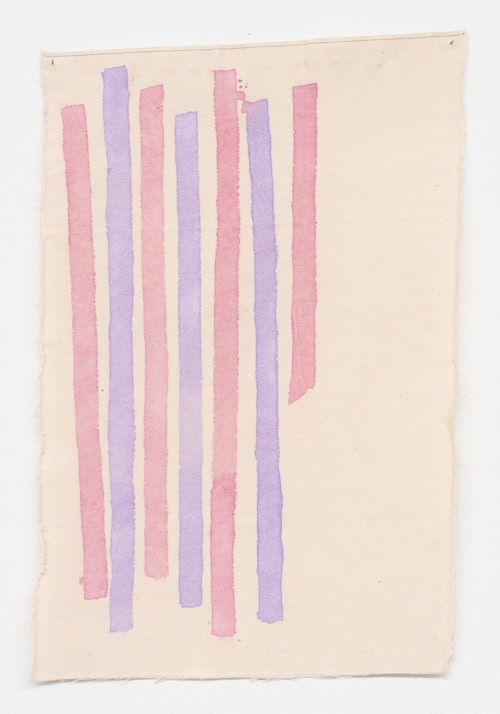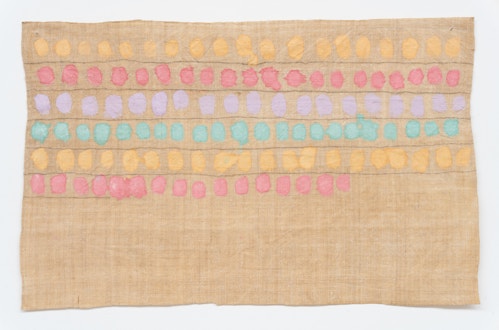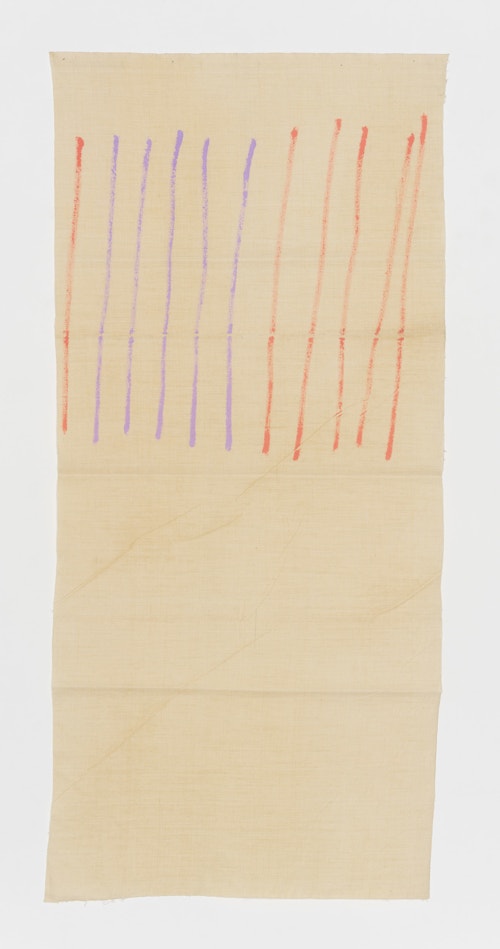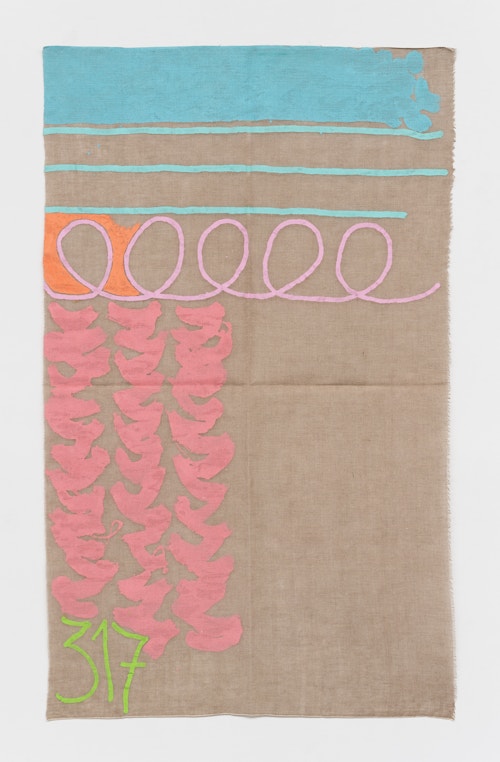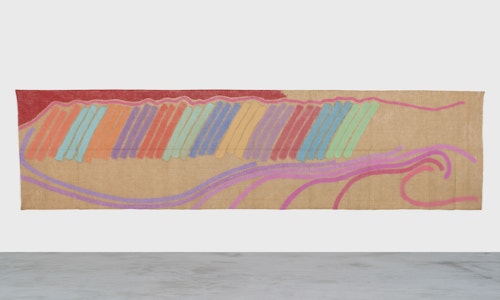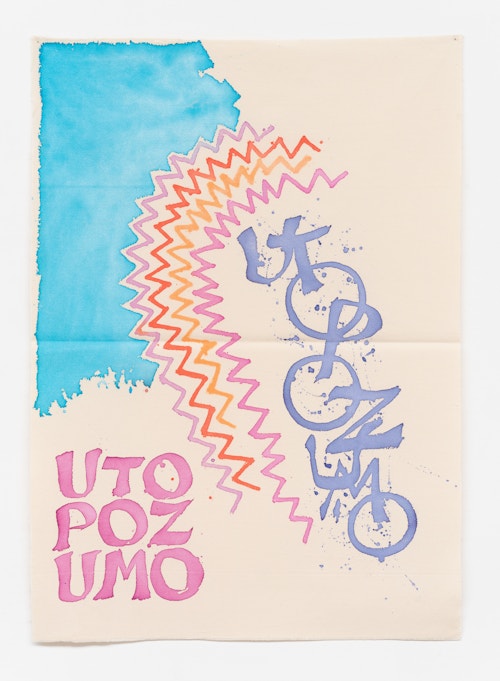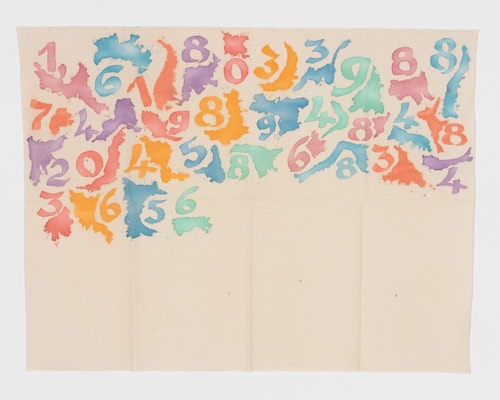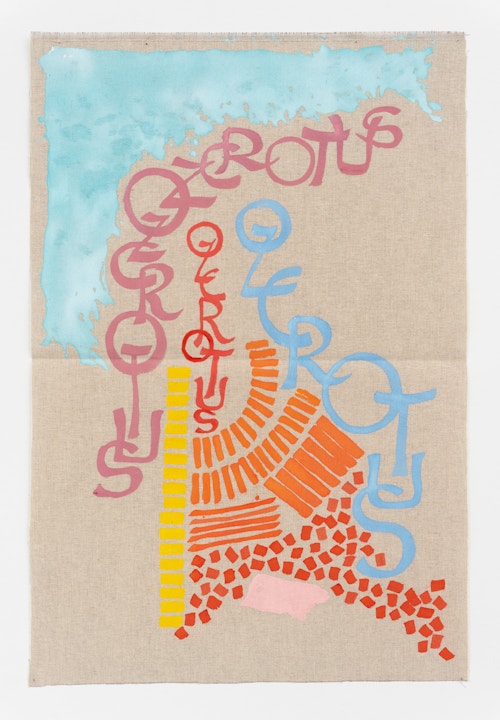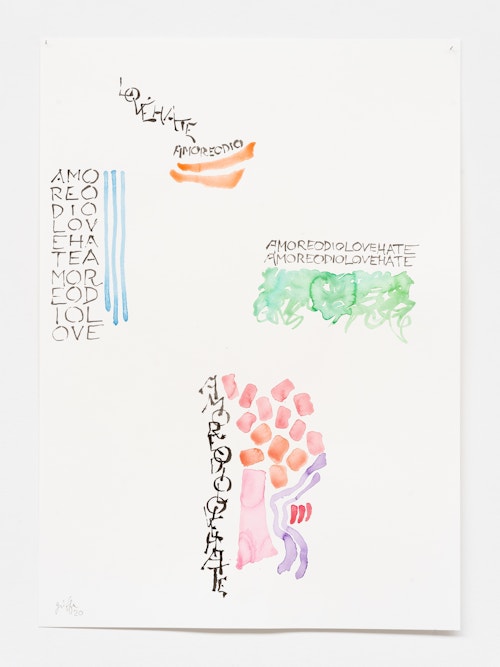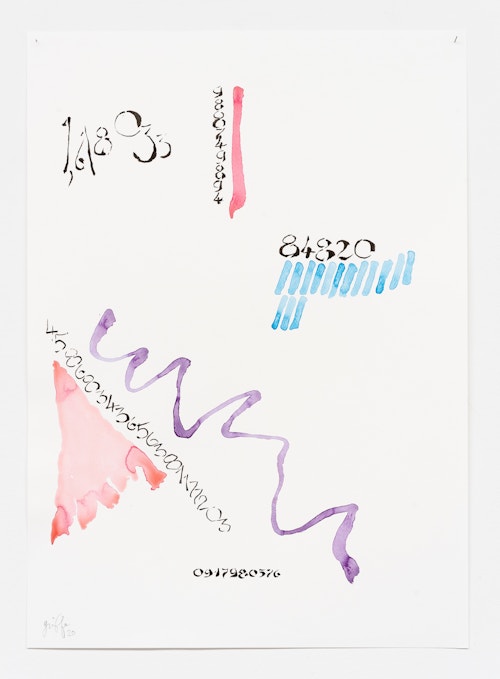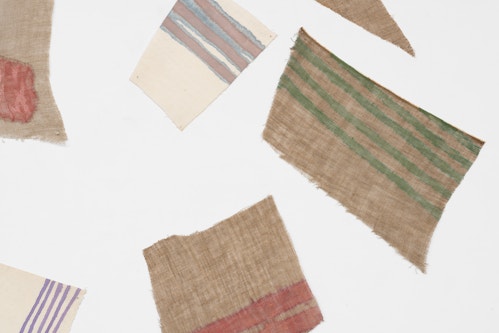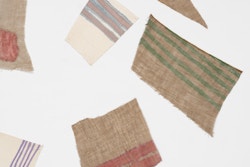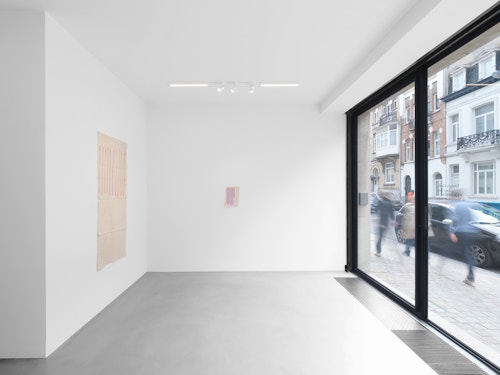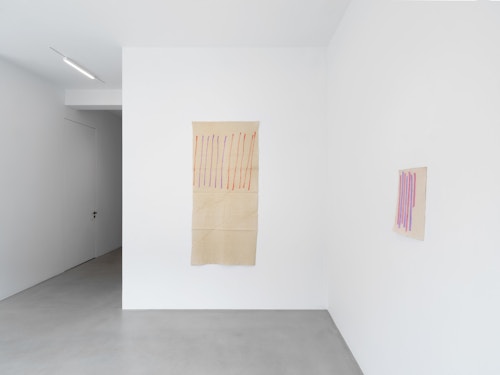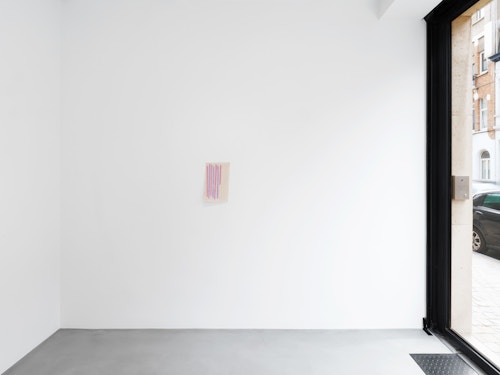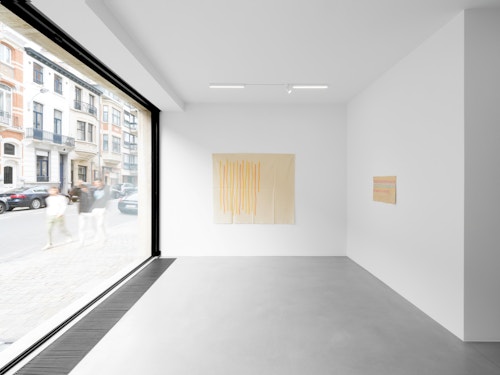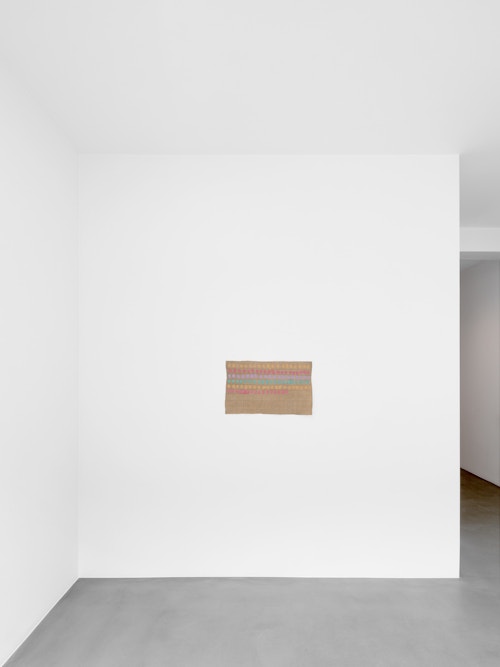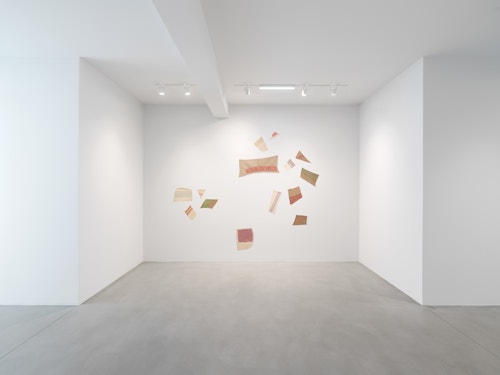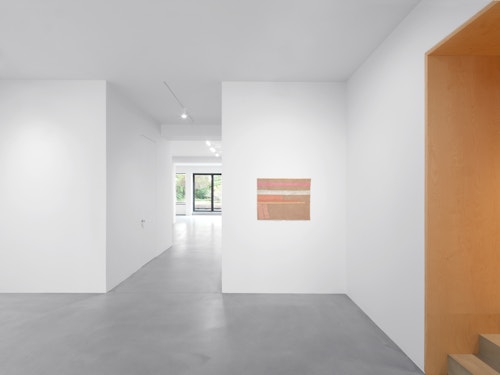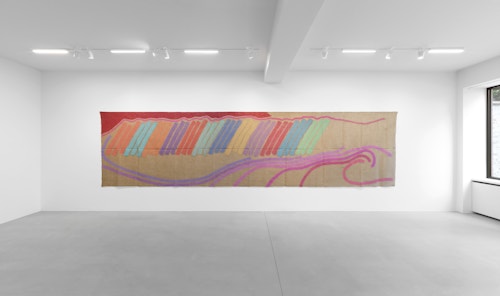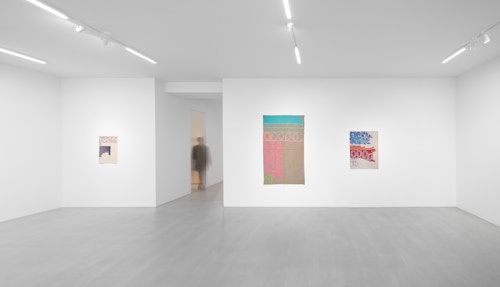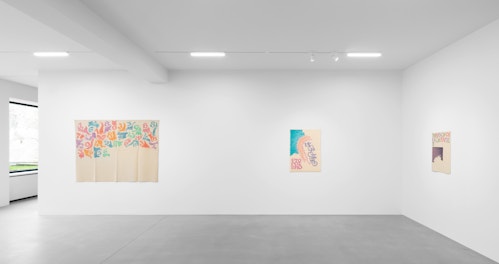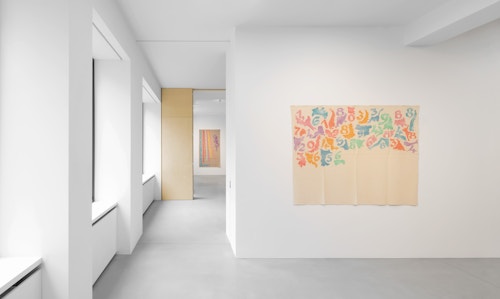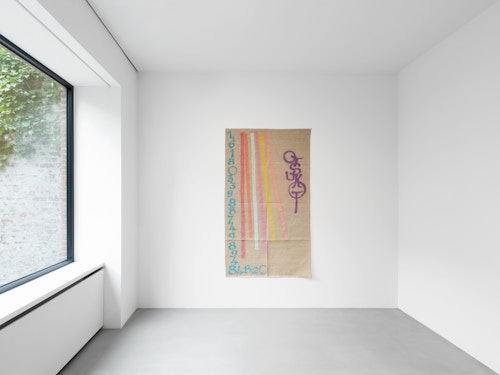
Giorgio Griffa Luce buio
Xavier Hufkens is delighted to announce Luce buio, the gallery’s inaugural exhibition dedicated to the work of Italian abstract artist Giorgio Griffa (b. 1936, Turin). From his early linear paintings of the mid-1960s to recent works from 2022, this presentation showcases all five decades of the artist’s career and highlights both the evolutions and constancies within an oeuvre that is as eclectic as it is poetic.

Giorgio Griffa is primarily known for his painted canvases that are nailed
directly to the wall — unprimed, unframed and unstretched — the majority of
which are executed in a luminous palette of desaturated colours. The canvases
are folded when not exhibited, which creates visible creases that become a
vital part of the work. At first glance, it is hard to differentiate the paintings
of fifty years ago with those made recently. A closer study of the oeuvre,
however, reveals the existence of eleven major cycles, ranging from the Segni
primari [primary marks] series of 1967 to the latest Dilemma paintings. Each
corpus has a start date, but not an end. Furthermore, certain works belong to
more than one cycle, as different creative trajectories intersect and merge into
each other. As the artist himself asserts, the cycles co-exist side by side, being
neither stages of progress nor regression, but simply continuous variations
of ‘becoming’. This latter word is crucial to understanding the oeuvre, for
Griffa’s sequences of lines, patterns, letters and numbers are not just universal
but also open-ended. Each work contains an element that could, in principle,
be continued indefinitely. Once the pattern is set, so to speak, we visually and
mentally expect it to continue. When it doesn’t — and there is always a point at which a line, phrase or pattern seems to arbitrarily stop — we anticipate its
prolongation, almost completing the sequence in our mind’s eye. Linguistically,
it is analogous to stopping mid-sentence, leaving the interlocuter (in this case
the viewer) to pick up the train of thought. This makes the empty spaces in the
works as important as the graphic elements themselves. What we see in Griffa’s
canvases are analogous to small excerpts from potentially infinite patterns, just
as the here and now is but one juncture in a far greater continuum.
Giorgio Griffa is both a painter and a lawyer. Until he retired from his legal practice, he devoted himself to his twin professions, a combination which takes us back to the renaissance ideal of ‘universal knowledge’. Related to this are the so-called seven liberal arts, which are divided into those of the word (grammar, logic and rhetoric; the trivium) and those of numbers (arithmetic, music, astronomy and geometry; the quadrivium). As profoundly interconnected mechanisms for understanding nature and humanity, and as media for change and renewal, these disciplines were regarded as the components of a single encompassing ‘art’: the foundation of all learning. This once indivisible link between the realm of words and that of numbers runs like a leitmotif through the various cycles in Griffa’s oeuvre, as seen in the distinct bodies of work depicting letters, phrases and quotes, and those departing from numerical principles, the Fibonacci sequence or the golden ratio, also known as the ‘irrational number’. Key to translating the ideas that spring from these inspiration sources, and countless other musical, historical and philosophical starting points both ancient and modern, is Griffa’s characteristically simple visual language involving archetypal signs: letters, numbers and lines. Nothing more, nothing less. Griffa does not paint what he sees, therefore, but what he thinks or, more specifically, what he knows. As he himself once said, “I do not represent anything, I paint.” This act of painting — using the lightest of all touches and ultra-fluid acrylic pigments — is thus a means of transmission, a way of articulating a deeply humanistic worldview that it is connected to every other field of knowledge. By conflating two passages from Four Quartets by T. S. Eliot, whom Griffa has long admired, we get close to the ideas embodied in the work: “For the pattern is new in every moment / And every moment is a new and shocking / Valuation of all we have been [...] And so each venture / Is a new beginning.”
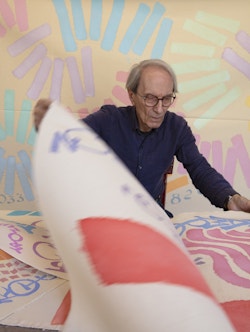
Giorgio Griffa (b. 1936, Turin; lives and works in Turin) initially completed a law degree in 1958 and became a practising lawyer. From 1960 to 1963, he learned how to paint by assisting the Italian painter Filippo Scroppo (1910-1993). Despite early associations with movements such as Arte Povera, pittura analitica [fundamental painting] and Minimalism, his work has always stood outside the mainstream currents in contemporary art. Giorgio Griffa participated in important international exhibitions such as Prospekt, Düsseldorf (1969 and 1974) and the Venice Biennale (1978, 1980 and in 2017) as well as Processes of Visualized Thought: Young Italian Avant-garde, Kunstmuseum Luzern (1970) and A Painting Exhibition of Painters who Place Painting in Question, curated by Michel Claura, Stadtische Museum, Monchengladbach (1973). Recent solo presentations of Giorgio Griffa’s works include Uno and Due, Galleria Civica d’Art Moderna e Contemporanea, Turin (2002), Neuer Kunstverein, Aschaffenburg (2005), MACRO, Museo d’Arte Contemporanea, Rome (2011), Golden Ratio, Mies van der Rohe Haus, Berlin (2013); A Continuous Becoming, Camden Art Centre, London (2018); Tutti i pensieri di tutti, Palazzo Collicola, Spoleto (2020-21); Marvels of the Unknown, LaM - Lille Métropole Musée d’art moderne, Villeneuve-d’Ascq (2021); La Recherche, Centre Pompidou (2022).


